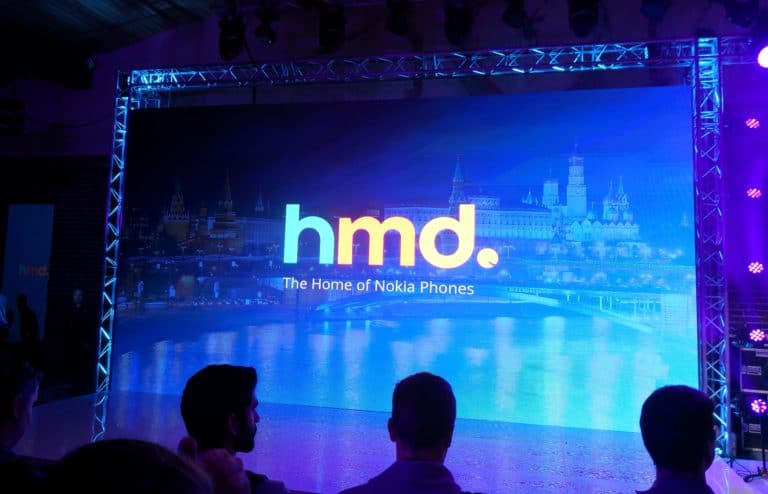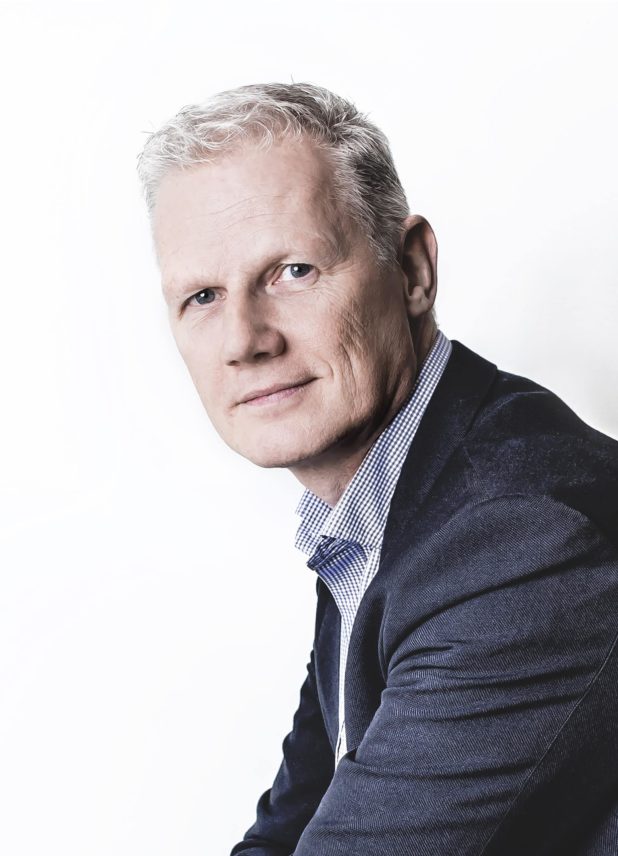Nokia often competes in tenders and is in a relatively good position in the business market. With new expansions in both software, hardware and personnel, the chances of winning even more tenders will increase. At least, that is the opinion of Stefan de Clerck, GM of HMD Global for the Benelux and France.
De Clerck can safely be called a Nokia veteran, even though that might sound a bit disrespectful. The fact is that he started at Nokia in 1997. This means that he experienced the entire process in the 00s: the rise, shine and fall of Nokia as a cell phone player and the sale to Microsoft. As we all know, that did not end well for the illustrious Finnish brand. Still, De Clerck seems to want to make sure at all costs that Nokia gets another chance, as he started “at the kitchen table without a Nokia phone,” as he puts it himself, in 2016, when HMD Global breathed new life into the brand. Initially he was responsible for Benelux, since October last year France has been added.
In terms of scale, Nokia as it is now is a fundamentally different company than it was before. To illustrate, De Clerck has five people on the payroll for the Netherlands and France. “Even though we are operational in 170 countries, we do not operate on the same scale as the other parties in the market,” he indicates for the sake of completeness. Because of the relatively small scale of the company as a whole, HMD Global simply can’t keep up with the spec and price wars of the (Asian) competition. This has consequences especially in the high-end market. That is therefore not a target market for Nokia. However, the smaller scale also means quick and local decision making, says De Clerck.
Advantages of the smaller player
As a relatively small player, HMD Global obviously has some limitations. However, there are certainly also significant advantages to the smaller scale, indicates De Clerck. HMD Global’s focus with Nokia on the West is an example of this. Nokia presents itself as a European (Finnish) company. This is certainly an asset in the current trade climate, with the sanctions against Huawei, in tenders with the government, for example. “Working in a small company, especially its Finnish DNA, also makes everyone feel responsible,” he points out of the impact on employees.
HMD Global/Nokia’s relatively modest size feels like a deliberate choice, we mention during the interview. “That’s right, one of the basic principles from the beginning has been to be profitable,” says De Clerck. In the beginning, Nokia tried to buy market share by extremely competitive pricing, but that wasn’t very successful. This was also partly due to the relatively limited scale. Substantial investments from Google, Nokia and Qualcomm indicate that major players in the market believe in HMD Global’s strategy. In part, this will also be based on the company’s profitability and thus its overarching strategy.
Android One is the foundation, also for enterprise
One of the first associations we have when we hear Nokia these days is Android One. The supplier’s entire product range is part of this program, which is also promoted by Google itself. This makes Nokia the only player to offer Android One across its entire portfolio. In addition to Google’s own Pixel phones, Android One makes third-party devices available with a ‘bare’ Android experience, without extra ‘skins’ over Android. Among other things, this results in much faster and easier updating of the software. Fast updates mean better security.
“Android One is finding its way, because the market simply wants security,” De Clerck summarizes. Hence, all devices in Nokia’s portfolio were running the most recent version of Android at the time of our conversation. That was still version 10, the updates to Android 11 are now underway. By the end of Q2 of this year, the entire portfolio should be updated.
De Clerck is particularly proud of the results of a study by Counterpoint Research. That survey of so-called ‘Trust Ratings’ placed Nokia right at the top. All 20 devices were running Android 10 at the time of the study. Only OnePlus could match that, but only for 7 devices. At Nokia, all devices also had the latest security patches that Google releases. This is especially important in the business market. As a decision-maker for an organization, you do not necessarily have to choose the expensive devices with the best update policy in order to have the best security level.
How European is HMD Global?
In the body text of this article, we state that Nokia is positioning itself as a European player. You could say that the old Nokia is being brought back to life. Given that it was not only HMD Global that breathed new life into the Nokia name, but also FIH Mobile/Foxconn, the question is how European HMD Global, and therefore Nokia, really is. We also asked De Clerck this question.
The link with Foxconn has in fact more or less been severed, he says. HMD Global has been Finnish from the start and there are many former Nokia employees working there, of which De Clerck himself is also one, of course. Furthermore, the ‘big’ Nokia has an interest in it that goes beyond a mere financial investment. All the servers used by HMD Global are also located in Finland. There is no end-user data on these, by the way, adds De Clerck: “These are used for one-time activation of the devices, for example, to allow the warranty period to start.” The main link to Foxconn is the factories that were bought from Microsoft in 2016.
It is also certainly not the case that Foxconn makes all devices for HMD Global. “We don’t have our own factories, but have our devices produced by the best bidding ODM,” he indicates. They want to keep this freedom, as it ensures that they are more competitive.
To further underpin the Finnish character, De Clerck also cites the acquisition of the Finnish security company Valona Labs. This brings even more development to Finland. The acquisition is part of the establishment of a Centre of Excellence, aimed at developing software on top of the hardware that the company supplies. HMD Connect (see body text) is an example of the type of software HMD Global is referring to. So all in all, it is safe to say that HMD Global is a very European company and is only going to become more so.
Beyond updates
Timely updates aren’t the only thing for including Nokia on the shortlist for organizations, according to De Clerck. “Actually, everything you need for business is integrated into Android One,” he states. Android One includes licenses for zero touch enrollment, for example. “With other players, Mobile Device Management is often added on top,” says De Clerck, without specifying who he is referring to. Listening ‘between the lines’, it’s safe to assume that he’s talking about Samsung Knox here.
For the enterprise market, besides Android One and the Enterprise Recommended stamp, the European identity is also important. “In tenders, we often compete with the two big ones [Apple and Samsung, ed.], then we can distinguish ourselves well with our European identity,” indicates De Clerck. He is, however, realistic about Nokia’s image in relation to Apple in particular. “Employee satisfaction, in terms of phones, often means Apple of course,” he indicates. However, this is also rather expensive. Those are a lot lower if you go for Nokia, while HMD Global “does its best to make it as good and beautiful as possible,” says De Clerck. He himself finds the quality surprisingly good for what you pay for it.
The low cost compared to, say, Apple provides a specific target group in the business market. That is, Nokia has a specific focus on the more frugal sectors. The public sector is one of them, but so are healthcare companies. The security focus and the update policy obviously also play a role here. As an example, De Clerck cites a tender from a ministry that HMD Global won, partly by offering an extra year of security.
What will the future hold for HMD Global and Nokia?
Almost every market now revolves more around software than hardware. This also applies to the market in which HMD Global operates. In part, the company has already incorporated this into its strategy by choosing Android One. In doing so, it has already made software the main differentiating factor. The acquisition of Valona Labs (see aside elsewhere on the page) is a second example of this. The development of specific services is the next step.
A first example of such a service is HMD Connect. This is a data SIM that allows you to roam in more than 150 countries. Especially for the business market this can be quite interesting. With HMD Connect Pro you can even do global management of all devices. You can also manage IoT devices with it. M2M is a growth market for HMD Global. For example, at the time of our conversation with De Clerck, he was in a tender in the healthcare sector, to centrally track specific health data. Furthermore, HMD Global recently joined the ioXt Alliance, a new certification program for IoT security.
At the moment, voice is not yet included in HMD Connect. If we listen closely to De Clerck, however, they are looking at including it.
Hardware isn’t the focus for HMD Global anymore, but that doesn’t mean they’re not looking into expanding that too. De Clerck is somewhat hazy about this. He says he has noticed that ministries, for example, like to buy several products from a single vendor. This could mean that tablets are also on the way (this time for real), perhaps even ruggedized. This he can neither confirm nor deny. It is being looked at, is all he wants to say about it. So that’s to be continued. We will undoubtedly hear plenty more from HMD Global and Nokia.

